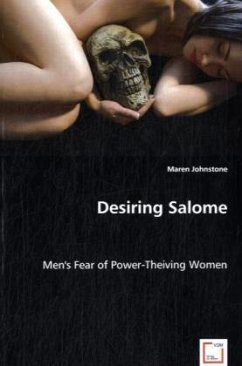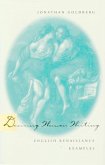In Europe during the fin-de-siècle, there was a great obsession with images of the femme fatale as she dominated the visual and literary arts, seeking the death of men. One of the most popular of these images is that of Salomé, the nameless girl who danced in the Bible for the head of John the Baptist. Many of the great minds of the time chose her as their subject. Flaubert, in his short story Hérodias, shows her to be a fantastic distraction, blinding King Herod with such desire that he cannot see his scheming wife's deadly plot. For Gustave Moreau and J.-K. Huysmans, she was an emblem, the immortal idol of the mortal woman, the source of all evil. For Oscar Wilde, it was not Salomé who is to fear, but desire itself which conquers the senses and inspires madness. The way in which Salomé is portrayed in all of these works, beautiful, sexual, powerful, reveals an overriding fear, a terror of woman's power over men. This power is stolen through the distraction of desire, she captures it by captivating the gaze, taking command of the commanders, dooming holy man's head. Desiring Salomé is for feiting power, putting a life in her hands.
Bitte wählen Sie Ihr Anliegen aus.
Rechnungen
Retourenschein anfordern
Bestellstatus
Storno








